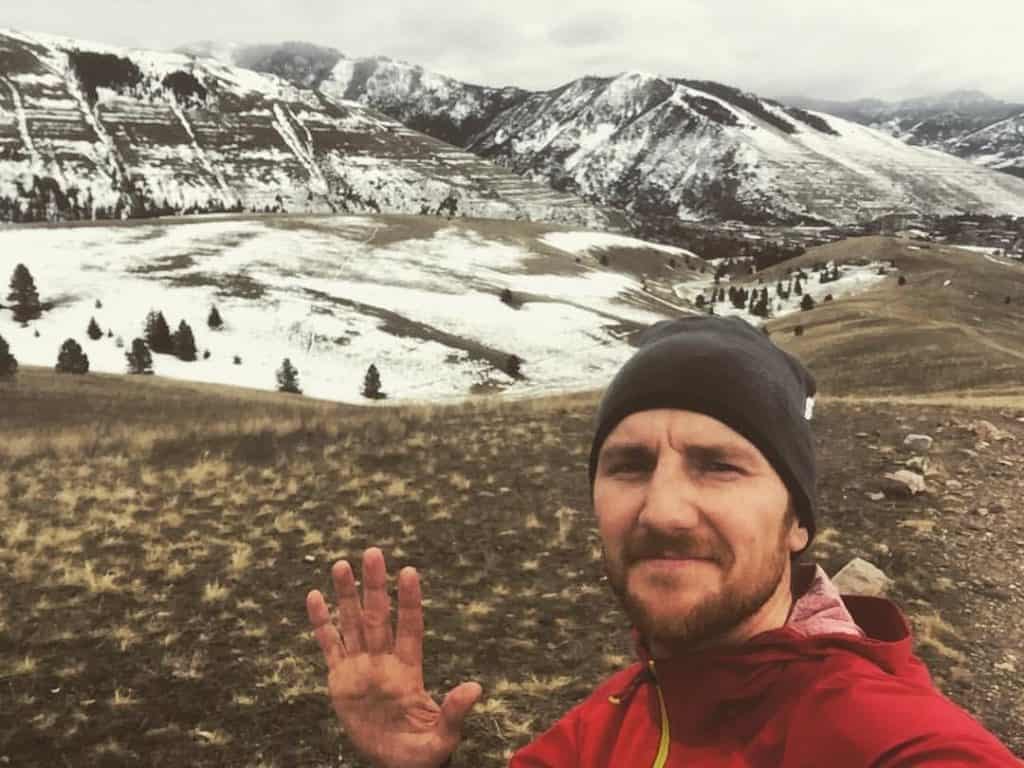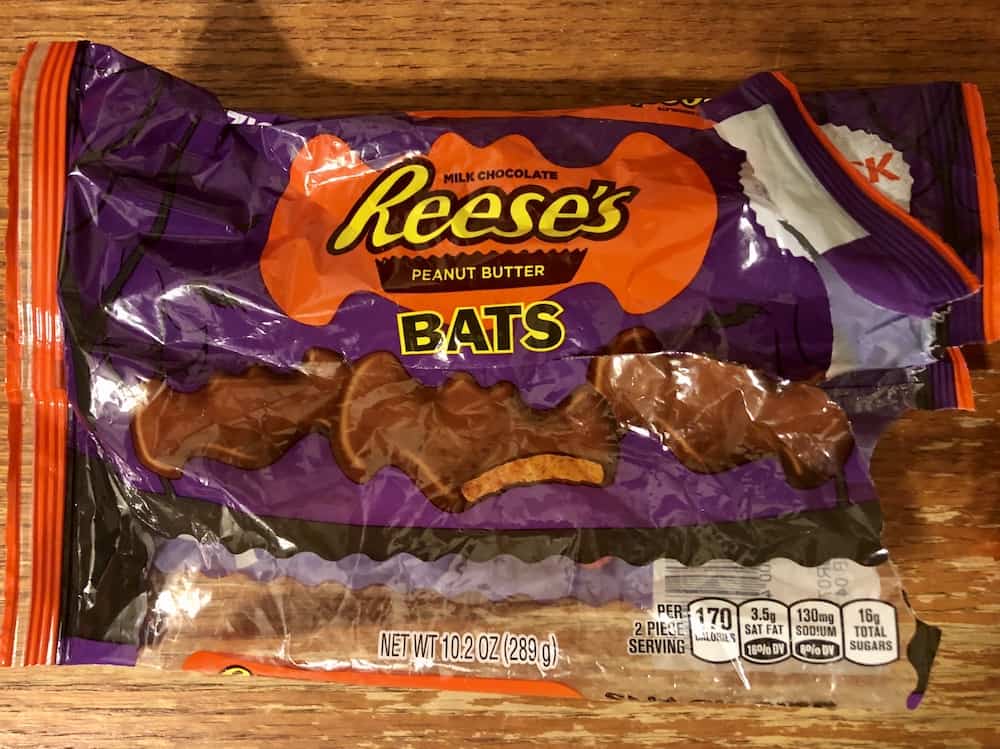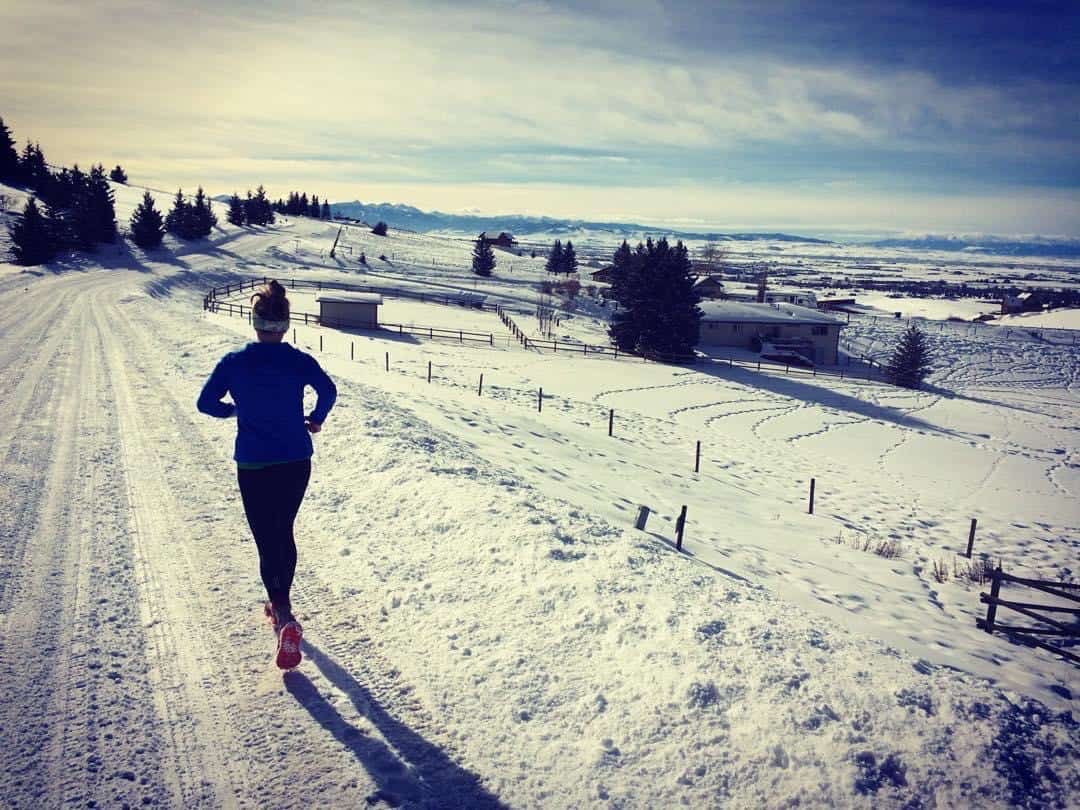An Ultrarunner’s Guide to Surviving the Holidays and Winter Season
by Chase Parnell — October 21, 2020
The holidays are coming and if you’re like me you’ve already started to fall into its trap. Halloween costumes, decor, and candy line the aisles of every grocery store you enter. And because we are only human, we find ourselves doing truly outrageous things, like I did yesterday, eating twelve Reese’s bats in one sitting. These are Reese’s peanut butter cups in the shape of a bat. I just wanted to feel good, okay! You know, experience a bit of that holiday spirit. Well, after the sugar high wore off and two hours later I still had no appetite for dinner, I decided I needed to write this post. Mostly as a preventative measure to help combat this upcoming season that so often steals or stunts any running fitness we might have accumulated. I hope in reading this you find a couple tips or ideas to adopt that will help you stay the course with your running dreams. I am a true believer in the power of running; it provides us structure to our days, a healthy and happy body and mind, and it brings together an incredible community of like-minded humans. It’s worth fighting for! So let’s do a little work on the front-end and make sure we keep this running life going strong through the end of 2020 and beyond.
Organize Your Winter Running Gear
It’s October, summer has long since faded to the background and we’re holding on to this last glimmer of decent weather before Old Man Winter descends on us as he invariably does. Daylight will continue to shorten a few minutes each day as well, all the way to winter solstice on December 21. And then, mercifully, days will lengthen.
I don’t know about you, but for me, as fall turns to winter, it gets harder and harder to get out the door. What helps, I’ve found, is to make sure I remove all possible obstacles from sucking my motivation dry. One such way to do this is to take the time to organize your gear. My winter stuff usually ends up in an assortment of small boxes, bins, and bags, sprinkled around the house and it’s usually just a matter of recollecting everyone into one place so that it doesn’t feel like a huge chore to get out the door.
Fill the Holes in Your Winter Gear
Now is also a good time to fill any holes in your equipment. I know there are a lot of different climates amongst our readers, so much of this might not apply to you, but I’ll list out the essentials for an average ultra runner in a mountain environment. Beanie* — It’s good to have two different beanies, one thick one for those really cold mornings and one light-weight one for the mornings where it’s nice to start with a beanie but you know you’ll probably take it off once you warm up. *I’m aware the term “beanie” may come under fire as it isn’t a universal term…come at me with your best arguments and alternatives.
Buff — As a bearded man, I don’t tend to worry about covering my face, but some people really like to have this extra protection from the cold and biting wind. Also, it can serve as an ineffective covid mask, which will earn you side-eyes from only the most ardent of maskophiles.
Base layer — If you’re not familiar with what a base layer is, think of a more advanced version of long underwear. It’s a tightly fitted layer of technical material that fits snugly to your body, keeping you warm while also wicking away moisture. If you run in really cold weather, a base layer top to wear under your jacket is practically essential.

Mid or insulation layer — Of the three layers, this is the one that you’ll only really need if you are very sensitive to cold weather or if you’re running in very very cold temperatures, like single digits or sub-zero Fahrenheit temperatures. This layer could be a lightweight micro-puff or fleece jacket.
Shell or outer layer — This is your wind and water proof/resistant jacket that when paired with a base layer, you can run in pretty much any weather. Make sure it’s running specific so that you have the appropriate shoulder mobility and ventilation features we need.
Tights — Get yourself a couple of good pairs of running tights. Having a lightweight pair for those days in the 20s and 30s as well as a heavier pair for those days in the negatives, 0s, and 10s, will be a luxury you won’t regret.

Gloves — Gloves aren’t too complicated. I really like the fingered gloves that have a pull-over flap that essentially turns them into mittens. I’ll start most runs in mittens-mode, pull back the flap to where I can see all five gloved fingers once I warm up, and then usually by the end of the run I take the gloves off altogether as my hands get uncomfortably warm. It’s not a bad idea here too to have a variety of different thicknesses depending on your climate.
Socks — Get yourself some nice winter running socks. I like wool for winter because of their ability to wick away moisture and retain warmth. Many wool sock brands offer great warranties too. I go through summer running socks ridiculously fast but I’ve had winter socks that last years.
Shoe traction — This is huge. I think a lot of runners really fear the prospect of slipping on snow or ice so they avoid running in the winter elements altogether. I’ve fallen too many times to count on ice and it was mostly due to my stubbornness around wanting to just put on my normal running shoes and get out the door without the hassle of traction control. Essentially, there are two options to consider: (1) screwing your shoes; or (2) purchasing traction devices that you strap onto the sole of your running shoes (Yaktrax). For shoe screwing, I dug up an old Jeff Browning blog post from 2008 that I remember using a decade ago and remains a valuable resource today. Jeff says in the tutorial that no amount of traction will work on a sheet of ice, and at the time I think that was pretty accurate, but these days, there are micro spikes (Kahtoola) made for runners that will make you very comfortable even on the iciest of runs. The only issue with the micro spikes is that they do not work well on mixed surface conditions because it’s no fun to have to take your spikes on and off a bunch of times as you go from dry ground to ice to slush, etc.
Head lamp — If you work a traditional 8-5 job you will be doing essentially all your running in the dark. Don’t skimp on your headlamp! The more lumens you’re working with the better you’ll be able to see the nuances of the trail, the texture differences between snow and ice, and the more likely you’ll be seen by cars. I prefer headlamps with rechargeable batteries because I inevitably end up wasting a lot of disposable batteries because I’m always paranoid they are going to die so I swap them out sooner that I really need to.
Alright, that’s a pretty comprehensive list without getting too far into the weeds. If you need recommendations for a specific product, leave me a question in the comments below and I’d be happy to tell you exactly what I’m using or what brands have worked well for me in the past.
Training Strategies for Winter Running
Take a break: First of all, if you’re one of the rare few that was able to have a really solid summer and early fall training cycle and racing season, then it might be time for a break, a reset. In years past, I like to take a two week break from all running before getting into my winter groove.
Establish your goals: A major determinate for what your winter training should look like are your goals. Are you racing in March or will your first race of 2021 be in June? What I recommend doing is plan to run consistently throughout the winter at a moderate level of volume with just a bit of intensity mixed in here and there. Then, when you are 16-18 weeks out from your first race of the year, transition to building volume and adding in more interval, tempo, and hill workouts into the training mix.
Build a training plan: Sit down and lay out your plan. If you have a race you are specifically training for and you don’t know where to start, shoot me an email at chase (at) treelinejournal (dot) com. For $75, I can build you a 16 week plan, customized for your specific race and fitness level. If you’re someone who doesn’t want to take on the monthly cost or pressure of hiring a coach, consider having me build you a plan you can trust.

Adjust on the fly: Okay, so one of the toughest parts about training through the winter is the variable nature of weather and surface conditions. Say you had an interval day planned and you wake up to snow on the ground. You can’t always scrap workouts or make a pattern of pushing them off until the weather is better. If you don’t feel comfortable running at faster paces on snow, I recommend swapping out your hard flat running for hard hill running. Uphill running is a great way to get some intensity in while still running slow enough to not risk falling and injuring yourself (well, the risk is lower I should say). Another option is to pick an alternate form of aerobic exercise. Going to the gym is my very last resort. Personally, I can’t stand it, so instead, if I need to get some intensity in but it’s too icy or snowy to run, I’ll hop on the cross country skis and do the best I can to simulate the workout I had planned. And honestly, it’s not a bad idea to integrate these alternate forms of exercise anyways to avoid overuse injuries that are so common for those of us that run year-round.
Work to improve one specific area of your running: Winter is a great time to focus on weaknesses in your running game. What is an area that you want to specifically improve? Have you noticed that you generally tend to struggle on climbs? The flats? Downhill running? Do you need to work on speed so you can run comfortably at a faster pace? Do you get injured a lot and need to work on strengthening your bodily generally to avoid injury? I recommend taking some time to think about an area that you’d like to improve and start being intentional. I’d recommend going to iRunfar and searching their database of articles. I can almost guarantee that over the course of their 10+ years, they’ve published an article that you can use to assist you.
Community and accountability: I can’t emphasize enough the importance of leaning on your running community through the winter months. In the spring and summer the excitement of racing and other goals are usually strong enough to provide all the motivation you’ll need, but in December and January, when it’s so important that you don’t lose all semblance of fitness, that’s really when you need the support of others. You can draw on their motivation to sustain you through your lows.
Now, for some of us, we either don’t have running buddies that we can call on or we’re just so introverted that we strain to pick up the phone and reach out. All I can say here is that I feel your pain but you need to get over it. And honestly, it’s not that hard these days! On Strava alone, there are legions of other runners that would love to get to know you and have a running partner themselves (if you live in a fairly populated area). Keep in mind that it’s important that reach out to other runners that are roughly the same level as you, which you can gauge by perusing their recent activities. It can all be as simple as saying, hey man, that’s a sick (or other appropriate adjective) loop you did, mind if I join you sometime? I’ve done this myself but I’ve also been on the receiving end and I was totally cool with it and I’ve made some really solid training partners that way. Also, it doesn’t hurt if the person you reach out to is in a similar life phase and maybe they have a tendency to run at similar times of the day as you. Since I had kids, I definitely run with other people less but still squeeze it in on occasion and I’m better for it.
Lastly here, if your town has a winter warriors training group, join it. If there are any community group runs, join them, and post all over your social media that you’re going to be there week in, week out. Any form of contrived accountability can really help you weather these months when motivation is typically lean. In that vein, tell your partner and your friends and family how important it is to you to stay in shape over the winter, tell them about your 2021 dreams, get them on board so that they know how to serve you along the way.
Miscellaneous Considerations
To wrap this up, I’ll hit a string of tips and advice that don’t exactly fall under any singular category. First, I’m going to recommend you register for a race, any race, in January. You aren’t going to focus your training around it, you might do a few workouts leading up to it, but really its only purpose is to serve as a motivator to stay in somewhat decent shape. Don’t plan on setting any PRs, just plan on showing up, toeing the line and getting a great workout in on race day. This is what we call a carrot.
Next, enjoy all the holiday meals and gatherings but try to stay in control at home. A half dozen feasts, even if you throw down in epic fashion, is not going to bury you. What you need to stay on top of is how you eat at home, regularly and consistently. Essentially, this is the 80/20 rule where you try to be “good” 80% of the time and let yourself be “bad” 20% of the time. To be clear, I am in no way advising that you restrict calories, I’m just saying do the best you can to avoid the Reese’s bats… and probably never drink the eggnog. When Grandma asks if you want to take the cherry cream cheese pie home with you, maybe you consider declining. And you know, pumpkin spiced lattes are essentially just giant glasses of milk. Be smart out there. Eat until you’re full but keep it as clean as possible. Keep your eyes on the prize, which is feeling healthy and strong during your upcoming 2021 racing and adventuring season. A little bit of sacrifice now will go a long way in keeping doors open for a big 2021.

Buy yourself a running related Christmas present. This is non-negotiable. An investment in your running is an investment in you. Send anyone who fights you on this to me.
There you have it. If you follow my recommendations above, when the ball drops, your New Year’s resolution won’t have to be get back in shape, but instead, reach new heights. Set yourself up for success, get after it this winter, and see where your newfound fitness takes you. You got this!
Enjoy this article? Consider signing up for our Rise & Grind weekly newsletter or supporting us via Patreon for as little as $2 a month. We appreciate your support. It goes a long way in keeping Treeline Journal afloat!



Regarding shoe studs for ice running, the Bronco Billy solution is definitely the low cost/reasonably effective option, and I use those in my heels. However, if you are really going to be doing a lot of very icy running, and can afford it, you really should get some of the carbide studs as they are SIGNIFICANTLY better on ice. Significantly. The company that makes them is called Best Gripe (www.best-grip.se) and if you want to buy a LOT of them there is a US distributor. Perhaps team up with a friend since they seem to only sell them in lots of 100. However, La Sportiva has co-branded them and sells them under their brand where you can find them at REI and the like. Example: https://www.rei.com/product/125946/la-sportiva-at-grip-hobnails-traction-kit.
I think it really comes down to how much you are willing to spend, and if you are planning on doing runs on very icy conditions.